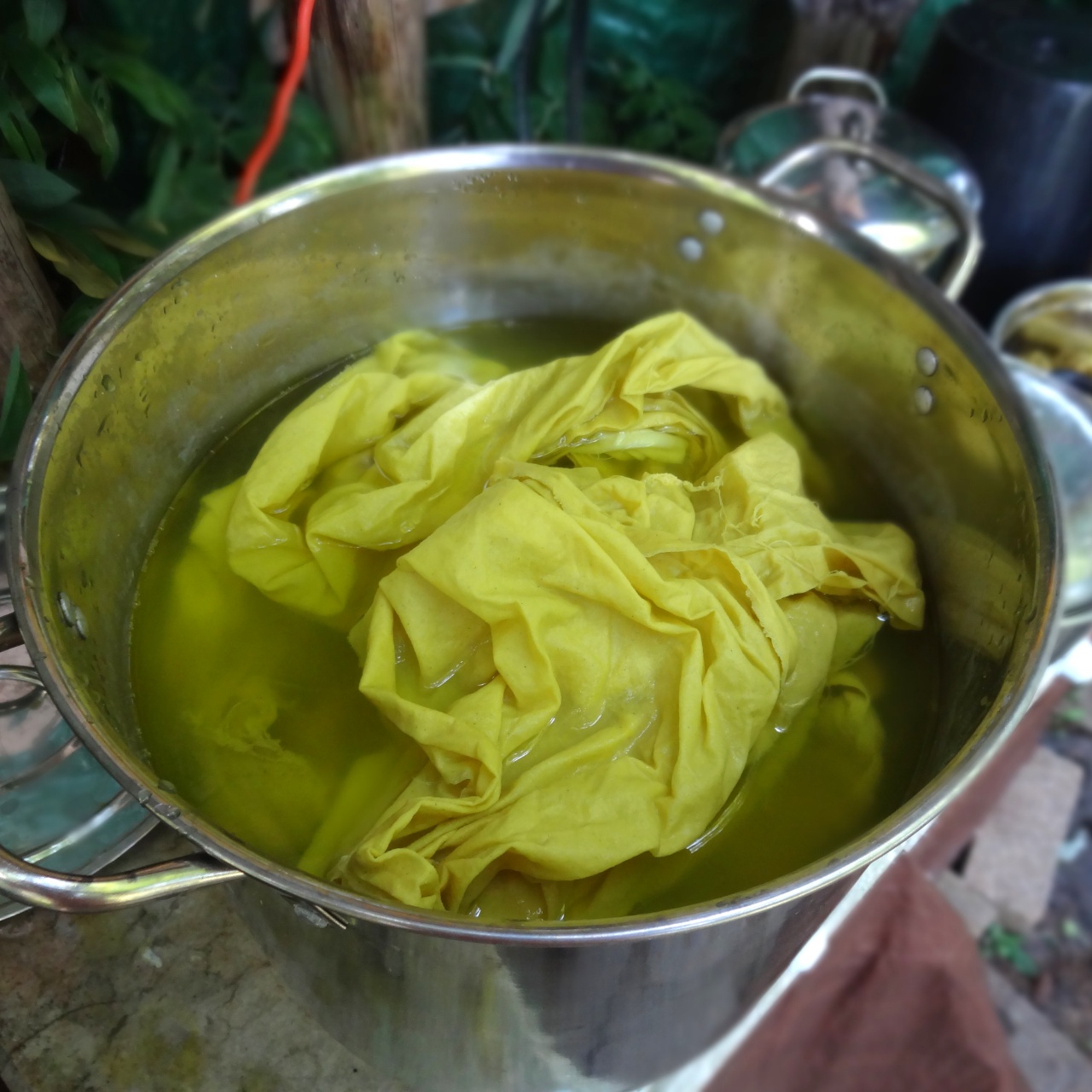When we moved to our place in the country, we bought 10 acres: 7 wooded ("The Forest") and 3 acres of cleared land. On the "front three" we planted a large vegetable garden and dutifully mowed the rest until it occurred to us that we did not really use all that lawn, so we let much of it go ("The Meadow"). Many plants and small critters took up residence there, especially goldenrod, which had escaped my notice until I started to use plants to dye fabric.
Oh my! I knew that goldenrod (solidago canadiensis for you Latin nerds) is valued for being an especially wash- and lightfast natural dye, and it turns out I have an abundance of it right at my doorstep! Actually, "abundance" is a gross understatement. I think I have enough to supply an entire Minions factory! I needn't fear that my neighbour's bees will go hungry, no matter how much I harvest! Here you see my meadow with the goldenrod in full bloom.
“The Meadow” (and “the dog”)
Goldenrod is also a very easy plant to use as a dye. The best time to harvest it is when the flowers are in full bloom but before they begin to fade and turn brown. Here is my harvested pot of gold:
To extract the dye, I cooked the flowers in rainwater for an hour or so and then turned the heat off and soaked them overnight to get every bit of that golden goodness out of them. I dyed three different weights of cotton fabric and was hoping to have three different shades of colour for each by using three dye baths, but the dye was so strong there was hardly any difference between the dye baths!
Just to back up and give the full picture. I mordanted all the fabric in a tannin bath of sumac leaves (also from "The Meadow") and then in Alum. I may have gone overboard on the sumac leaves because the fabric was already a bit yellow when the mordanting was complete.
It’s a shame the computer screen cannot reproduce the vivid yellow of the dyed fabric. Modeled on the pretty ladies below, you can see the range of possible colours produced in last year’s goldenrod dye pot: from a dark golden mustard to a pale, buttery cream. I love them all!









